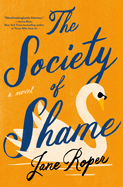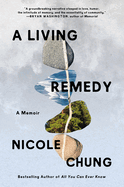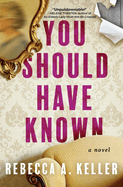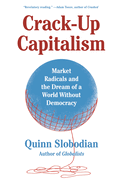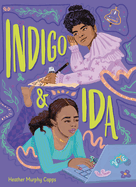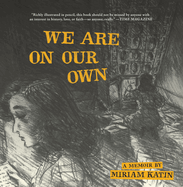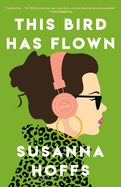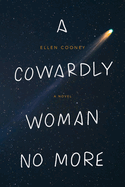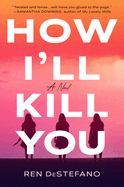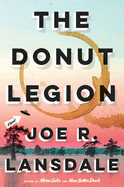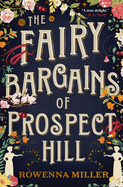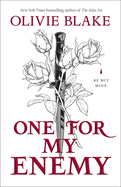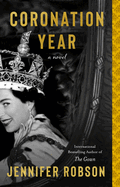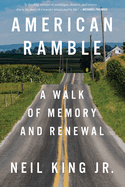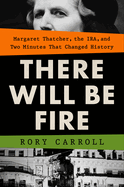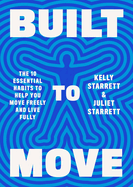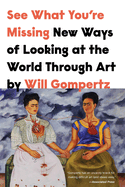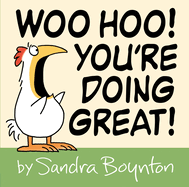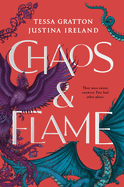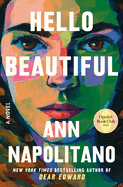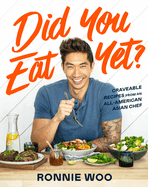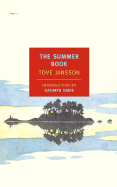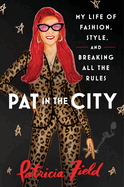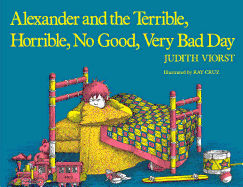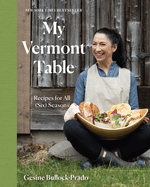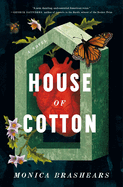Friday, April 7, 2023
We have some standout memoirs this week, including A Living Remedy, Nicole Chung's "beautifully written" book about facing the loss of both parents in a devastating handful of years; We Are on Our Own by Miriam Katin, a "powerful memoir" in graphic novel form based on her and her mother's survival journey during the Holocaust; and American Ramble, in which Neil King shares his 330-mile journey on foot "in a clear and affecting way." Plus so many more!
Nicole Chung discusses the evolution of A Living Remedy in The Writer's Life; it started out as one book, then evolved into quite another.
The Society of Shame
by Jane Roper
Jane Roper's The Society of Shame is a wicked and wickedly funny send-up of cancel culture and a serious examination of the distinctly modern thrill of taking offense.
As the novel opens, Kathleen Held, a wife, mother and production editor, pulls up to her house in a taxi to find a fire in her garage; her U.S. Senate candidate husband, Bill, in his underpants; and a woman in a cocktail dress passed out on the property. Kathleen's taxi driver snaps a picture that he posts online: it's a shot of Bill, Bill's incapacitated paramour and, from behind, Kathleen, who is unmissably having her period. Overnight, Kathleen becomes the figurehead of the Yes We Bleed movement, which is dedicated to the cause of menstrual rights and the end of period shaming--which she's all for, but shouldn't she have been asked first?
While she's packing to leave the adulterous Bill, Kathleen intercepts and opens an envelope intended for him. It's an invitation to a luncheon hosted by an organization called the Society of Shame. Figuring that, as a wronged woman whose feminine hygiene mishap went viral, she should be the one getting the sympathy, not Bill, Kathleen goes in his place.
The Society of Shame is brilliantly executed, improbably well sustained and truly hilarious. Roper (Eden Lake) nails the shameless theatricality of politics and the anarchy of social media, but within her uproarious indictment is a quieter, rather moving consideration of a woman who's a feminist living in a man's shadow but determined to do right by her daughter. --Nell Beram, author and freelance writer
Discover: Following a feminine hygiene mishap, a woman unwittingly becomes the figurehead of a menstrual rights movement in this brilliantly executed, improbably well sustained and truly hilarious novel.
Ten Planets
by Yuri Herrera, transl. by Lisa Dillman
Fans of interplanetary adventures that range from macabre to dystopian will find ample pleasures in Ten Planets, a collection of stories by Mexican writer Yuri Herrera (Kingdom Cons). In these 20 pieces, translated from the Spanish by Lisa Dillman, Herrera explores feelings of longing among protagonists human and otherwise. Some stories are tender, such as "The Science of Extinction," in which a man who possesses only fleeting memories of his family and realizes "he'd soon be lost," props a notecard on his windowsill as a reminder. Others are more ghastly, like "The Obituarist," in which the protagonist's task of finding personal details for obituaries is complicated by his inability to see people who are "protected by a buffer that blocked" everything about them. For full-bore gruesomeness, check out "The Cosmonaut," featuring a man who has a gift for sniffing out unpleasantries, such as the skeleton of an ex-girlfriend's baby brother, "dressed in a blue crocheted baby jacket" and secured in a shoebox.
One of the trickiest literary feats is to make grisliness poignant. Herrera meets that challenge in several works, including "The Monsters' Art," where a bailiff collects artwork from monsters in a dungeon while yearning to produce his own. And some pieces are whimsical: in "Zorg, Author of the Quixote," a man with multiple arms seeks editing advice for a story that features windmills and characters named Sancho and Dulcinea. An editor finds the work adolescent and suggests he revise: "use a little imagination," she says. As this collection proves, Herrera could give Zorg plenty of pointers. --Michael Magras, freelance book reviewer
Discover: In 20 otherworldly tales ranging from the macabre to the dystopian, Mexican author Yuri Herrera explores desire and loneliness among a distinctive cast of characters.
This Bird Has Flown
by Susanna Hoffs
This Bird Has Flown, the first novel from musician Susanna Hoffs (the Bangles, Ming Tea), is a pop confection that's too substantive to qualify as bubblegum and too much fun to qualify as emo. Call it power pop with soul.
As the novel begins, 33-year-old singer-songwriter and lifelong Angeleno Jane Start is in a bad way: not only is she in the "Where are they now?" files, but her filmmaker boyfriend has just left her for (what else?) a young lingerie model. This has precipitated both a mortifying move back into her parents' house and grudging participation in an embarrassing cash grab: Jane finds herself at a Las Vegas bachelor party karaoke-ing her lone, 10-year-old hit song.
Desperate to get away and dedicate some time to songwriting, Jane accepts an offer to stay at her British manager and best friend Pippa's London flat. On the flight to Heathrow, Jane sits next to Tom Hardy, a dreamy Oxford professor of English literature who has never heard of her; for Jane, this is, as she later reflects, "liberating." After the flight, Jane gives Tom her number, and they eventually meet up and play house in Oxford.
Hoffs injects moments of exhilaration into the routine humiliations of fallen stardom. This Bird Has Flown has sex, drugs/drink, rock and roll, and also a screwball comedy's worth of misunderstandings and a bona fide crisis of conscience. Although there's always the air of inevitability hovering over a rom-com--is there really any doubt that the couple at its center will ultimately unite?--Hoffs is too good to end on the note that readers are listening for. --Nell Beram, author and freelance writer
Discover: Centered on a heartbroken one-hit wonder hoping for a comeback, this romantic comedy from Bangles front woman Susanna Hoffs is the literary equivalent of power pop with soul.
Old God's Time
by Sebastian Barry
The ghosts of buried abuse and other personal tragedies haunt a retired police officer in the elegiac Old God's Time by Sebastian Barry (A Thousand Moons; Days Without End; The Temporary Gentleman). Tom Kettle has been off the police force for nine months, living quietly in his home overlooking the Irish Sea, when two officers arrive asking questions about an unsolved murder case from decades in the past, which has risen to attention in an investigation of abusive priests. The cold case takes Tom back to his honeymoon and the secrets his wife confided to him about the abuse she survived.
Barry's work often deals with Irish immigrants and their roles in the tides of history, but his rich prose works on a more intimate scale. Tom's failing and sporadic memories inhabit a stream of consciousness that, despite its meandering nature, remains accessible to readers; the ride is smooth, even though one is never quite sure what's beyond the next bend. Along with the rampant sexual abuse of children by priests throughout the decades, Tom wrestles with grief over other tragedies that have touched his family; Barry slowly metes these out to readers as Tom assists with the case and navigates the other mysteries of retirement, such as the actress who recently moved in nearby, and the question of her relationship to the older man sometimes seen with her. Lingering on themes of memory, grief and justice, Old God's Time is a lyrical Irish tragedy. --Kristen Allen-Vogel, information services librarian at Dayton Metro Library
Discover: In this haunting tragedy, an Irish police officer in retirement struggles with a cold case and gnawing grief.
A Cowardly Woman No More
by Ellen Cooney
After eight years with "the company," Trisha Donahue, the ideal candidate for an imminent promotion, is stunned when an underqualified man gets the job. Forty-four-year-old Trisha--smart, capable and committed to quietly "fitting in" like "one of the guys"--overcomes lifelong self-doubt and confronts the injustice in a dramatic, clever escapade at the company's annual Banquet Day, an event that falls soon after her betrayal and "wasn't exactly optional."
In A Cowardly Woman No More, the sensitive, often funny 11th novel from Ellen Cooney (The Mountaintop School for Dogs and Other Second Chances), Trisha is unequivocally likable. The company grows "sleek and even stern" after a "new regime" takes over, but her job meshes well with the comfortable suburban life Trisha shares with her loving husband and two young sons; she reminds herself she is "lucky lucky lucky." Reluctantly showing up at Banquet Day to find she is inexplicably (and literally) spotlighted as "Employee of the Year," Trisha flees into the employee-only regions of the Rose & Emerald restaurant. Here, a host of surprising allies shelters her: a sympathetic coworker, mysterious strangers and restaurant staffers she knew in her past. Each prompts memories and insights, and Trisha relaxes in her peaceful hiding place, pondering life-altering decisions. She has long endured workplace sexism and acknowledges the culture that fosters it, starting with the childhood lesson to "never speak up." A Cowardly Woman No More, narrated by a newly assertive heroine, is an inspiring literary reminder that the era of the classic feminist revenge movie 9 to 5 isn't yet history. --Cheryl McKeon, Book House of Stuyvesant Plaza, Albany, N.Y.
Discover: After a lifetime of compliance and discrimination, a newly assertive woman surprises her company and herself in a dramatic act that prompts a turning point.
Mystery & Thriller
You Should Have Known
by Rebecca A. Keller
A sharp, sensitive, self-aware 72-year-old intimately narrates You Should Have Known, a beautifully drawn psychological literary thriller--and an accomplished first novel--by Rebecca A. Keller. Francine "Frannie" Greene is a widowed wife and grandmother. This retired nurse still grieves for her husband and for a teenage granddaughter whom a drunk driver killed years before. The girl's shattering death deeply affected the family--and reshaped their lives.
After she sustains a few falls, Frannie's adult children convince her to move into a high-end assisted living facility. Frannie is pleasantly surprised by her new living arrangement. She sparks an instant friendship with a woman in the library, Katherine, discovering they share affinities for books, pie and soap operas. Frannie, however, later learns that Katherine's husband, Nathaniel, is the "reprehensible" judge who accepted a bribe and let her granddaughter's killer avoid serving prison time. Frannie secretly plots revenge on the judge, but her actions go awry. When another resident dies suddenly and an investigation ensues, implicating others in the sudden death, Frannie is forced to face her own evils. Can she stand by and watch another injustice play out?
Frannie's wise, introspective narrative voice heightens the suspense in this complex thriller. Her anger and resentments, contrasted against flaring bouts of conscience and self-questioning, make for an immensely thought-provoking psychological portrait that explores themes of what is right and what is just. --Kathleen Gerard, blogger at Reading Between the Lines
Discover: You Should Have Known is a deeply thought-provoking, intimately drawn psychological thriller about an elderly woman who sets out to avenge her granddaughter's death.
How I'll Kill You
by Ren DeStefano
Identical triplets Moody, Iris and Sissy often fall in love--rather, in like or just interested--but Ren DeStefano's amusingly dark, character-driven How I'll Kill You is no romance, unless it was written by a praying mantis. The triplets are serial killers who seduce men before killing them and then disposing of their bodies. Moody and Iris have dispatched three men each, but Sissy hasn't yet become a murderer; instead, she's been on cleanup duty. They've had a "clean streak," getting away with murder across the country before settling in small, "unremarkable" Rainwood, Ariz. The 25-year-old sisters decide this is where Sissy will have her first kill. Sissy chooses Edison, a 29-year-old churchgoer still grieving his wife's death. But Sissy breaks her twisted sisters' main rule: she falls in love with Edison and wants a life with him--not his death.
DeStefano, who writes YA novels as Lauren DeStefano (Wither; The Glass Spare), gives this delicious black comedy a poignant backstory, explaining what led the sisters to this career path. Abandoned at birth by their anonymous mother, they were separated while shuffled around various abusive foster homes. The triplets, unloved except by each other, exact their revenge on the world, in their distinctive way, for past grievances. DeStefano--who cleverly shows how the murderous sisters hide in plain sight and work as masters of disguise, sometimes pretending to be twins to establish alibis--delivers an original plot in How I'll Kill You. --Oline H. Cogdill, freelance reviewer
Discover: In this often amusing and dark thriller, identical triplets who were abandoned at birth exact their revenge on the world by becoming serial killers of men.
The Donut Legion
by Joe R. Lansdale
A former detective's search for his ex-wife leads to a cult that thinks aliens are coming to save them in The Donut Legion, a dark-humored murder mystery from Joe R. Lansdale (Moon Lake; More Better Deals). Charlie and his brother, Felix, used to run a detective agency, but Charlie left it behind. Late one night, Charlie gets a visit from his ex-wife, Meg, who asks him to investigate the murder of Ethan, her husband, and warns him to beware of omelets. Before Charlie can understand, he realizes Meg isn't really there at all.
Felix thinks Charlie had a hallucination. The landlord says Meg and Ethan paid their rent in advance and left. Felix agrees something isn't right, and it all leads to a cult of alien believers known as the Saucer People who live on a compound awaiting the arrival of a savior spaceship. The Saucer People run a string of donut shops and allow tourist visits to the compound, so the police view the cult as good for the local economy. Then an old friend of Felix's shows up to warn the brothers to back off. Charlie isn't going to back down, and Felix doesn't respond well to threats--or to the Saucer People. Plenty of hilarious insults fly between the good, the bad and the crazy, and it all leads to one outcome: mayhem.
Lansdale's solid murder mystery is filled with self-deprecating witticisms, wry observations and outright violence, but underneath all that is a bittersweet story of love and loss. New readers and diehard fans of this author should enjoy the taste of this Donut. --Paul Dinh-McCrillis, freelance reviewer
Discover: Ghosts, zealotry and human carnage thwart a former detective trying to find his ex-wife in The Donut Legion, Joe R. Landale's darkly humorous murder mystery.
Science Fiction & Fantasy
The Fairy Bargains of Prospect Hill
by Rowenna Miller
A rich Gilded Age setting grounds a vivid historical fantasy world in The Fairy Bargains of Prospect Hill by Rowenna Miller (Torn). The veil is thin on Prospect Hill, and for generations the farmers there have offered trades with the fairies to improve a crop, create good luck, or ensure good weather for an important day.
The old ways are fading with the arrival of railways and factories, but at Orchard Crest, the family still knows the value of being a little "superstitious." Keep the old bargains, stay away from the tree that serves as the gate to the fairy realm, and don't mess with fairy rings--or somebody might get themselves trapped in a bargain they didn't understand. Alaine tends the farm while her husband works in town, and her younger sister, Delphine, marries a man from the city in hopes of carving out a new kind of life for herself. But when Alaine learns Delphine's plans to be a society wife are going disastrously wrong, she begins to take risks negotiating with the fairies in new ways.
The Fairy Bargains of Prospect Hill weaves a heartfelt story of sisterly love with well-developed fairy lore, and depicts the growing spheres of power for women in the years before suffrage. Fans of Ami McKay's The Witches of New York and H.G. Parry's A Declaration of the Rights of Magicians will be enthralled. --Kristen Allen-Vogel, information services librarian at Dayton Metro Library
Discover: Desperation drives two sisters to take dangerous risks with the fairy world in this vivid Gilded Age historical fantasy.
One for My Enemy
by Olivie Blake
Romance, intrigue and betrayal saturate One for My Enemy, a twisty urban fantasy from Olivie Blake (The Atlas Six). Baba Yaga's Artisan Apothecary is only part of the Antonova family's business interests, and both their luxury serums and their illegal intoxicants are the result of their magical gifts. For many years--since Baba Yaga refused to marry their patriarch, Koschei the Deathless--they have been rivals of the Fedorov family. A conflict breaks out when a Fedorov encroaches upon the magical drug market, and a cold war becomes a blood feud between the family heirs. When the youngest of each family's grown children, Sasha and Lev, meet, they are immediately attracted to each other, and Romeo and Juliet doesn't begin to convey the level of complications possible when the two houses in question have magic and otherworldly allies at their disposal.
Blake packs a complex family feud with a history that goes back years into an action-packed tale of magical intrigue that never slows. She vividly portrays the bonds among parents, siblings and lovers, whether they hold or fray, and her occasional use of well-timed flashbacks helps to maintain momentum. Depending on their ability to remember multiple nicknames for characters, readers may want to take notes and refer to the dramatis personae pages at the front of the book. But this web of love, deceit and revenge will keep them on the edge of their seats. --Kristen Allen-Vogel, information services librarian at Dayton Metro Library
Discover: The stakes are high in love and revenge for two magical dynasties in this intricate fantasy about star-crossed lovers.
Romance
Coronation Year
by Jennifer Robson
Jennifer Robson (Our Darkest Night; Moonlight over Paris; After the War Is Over) returns to postwar London in her warm seventh historical novel, Coronation Year. As 1953 dawns, the city prepares for the coronation of Queen Elizabeth II, and the residents of the Blue Lion hope the day will change their fortunes. Edie Howard, the hotel's owner, needs a morale boost and an infusion of cash to keep her family's legacy alive. Photographer Stella Donati is trying to build a new life in London after horrific wartime losses in her native Italy, and thrills at being chosen for the coronation's press corps. Anglo-Indian artist James (Jamie) Geddes, also struggling with his wartime experiences, receives a lucrative commission to paint a portrait of the queen as she passes by. Robson interweaves these characters' stories to show how the machinations of the royal family affect the lives of everyday Londoners.
Robson's narrative deftly blends her three protagonists' challenges with moments of lightness and joy. Though Edie struggles to keep the hotel's books balanced, she is charmed by her growing connection to Jamie. Stella wonders if she'll ever be happy again after losing her family to the war, but she finds a congenial work environment, and enjoys building her photographic skills. Jamie, meanwhile, faces both casual racism and his own wartime trauma, but finds an unexpected home at the Blue Lion. Despite a series of anonymous threats aimed at both the hotel and the queen, Robson brings her characters and the coronation to a triumphant conclusion. --Katie Noah Gibson, blogger at Cakes, Tea and Dreams
Discover: Jennifer Robson's warm seventh novel explores the impact of Queen Elizabeth II's coronation on a group of ordinary Londoners.
Biography & Memoir
A Living Remedy: A Memoir
by Nicole Chung
Nicole Chung's first memoir, All You Can Ever Know, looked closely at her experience as a Korean adoptee raised by "color-blind" white parents. With A Living Remedy, Chung again turns a thoughtful eye on her family, this time facing the loss of both parents in a devastating handful of years. Her narrative, understandably, tackles death and grief in all its myriad forms, but it also provides an incisive indictment of the U.S. healthcare system, and the ways it fails those living in economic insecurity.
After attending college across the country, Chung builds a life far from her parents in Oregon, a decision both difficult and necessary. But caring for aging parents at such a distance proves nearly impossible, especially when complications from diabetes and kidney disease strike her father, revealing just how vulnerable they are. She knows her father's death did not have to occur as it did, and writes, "It is still hard for me not to think of my father's death as a kind of negligent homicide, facilitated and sped by the state's failure to fulfill its most basic responsibilities to him and others like him." Then Chung's mother is diagnosed with terminal cancer as Covid-19 lockdowns set in. The distance becomes unbearable, and navigating this grief is its own challenge: "Loss in the time of coronavirus can feel like skirting the borders of a deep, dense forest that is still largely unknown and unexplored." Beautifully written, A Living Remedy faces loss in all its heartrending shades, but mingling in every dark moment is the light and love of family and the unquenchable faith of her parents. --Sara Beth West, freelance reviewer and librarian
Discover: Beautifully written, A Living Remedy faces loss in all its heartrending shades, but mingling in every dark moment is the light and love of family and the unquenchable faith of Chung's parents.
American Ramble: A Walk of Memory and Renewal
by Neil King
On an early spring morning in 2021, veteran Wall Street Journal reporter and two-time cancer survivor Neil King Jr. walked out the front door of his home in Washington, D.C., bound on foot for New York City, some 330 miles away. American Ramble is the wise, warmhearted account of a journey that was pedestrian in its execution, but miles from that in the depth of King's experience.
King's "ramble" through what he calls "many micro nations" across Maryland, Pennsylvania, New Jersey and New York unspools as a near-perfect blend of planning and serendipity. For instance, he delayed his scheduled arrival at a Lancaster County farmhouse, inhabited by nine generations of the same family, to observe a horseshoeing operation he learned of from a sign tacked to a tree and the sound of hammering. One meeting he returns to repeatedly is a visit to a Mennonite school, where a chorus of eighth and ninth graders serenade him with hymns about the afterlife and provide "a new frame through which to see the entire walk."
Though he embarked with a notion that his trip might provide an opportunity to sample the national mood, when he ends the odyssey in New York City's Central Park 26 days after it began, King admits he's "reluctant to extrapolate from my particulars to argue that we are a happy or troubled land." But in the variety and richness of his many contemporary encounters in this small slice of America, he provides at least some reason for hope. --Harvey Freedenberg, freelance reviewer
Discover: Veteran journalist Neil King Jr. traverses a portion of the Acela corridor on foot, finding beauty, history and meaning along the way.
History
Fever in the Heartland: The Ku Klux Klan's Plot to Take over America, and the Woman Who Stopped Them
by Timothy Egan
With right-wing extremism on the rise in the United States in 2023, former New York Times columnist Timothy Egan's A Fever in the Heartland arrives at a critical moment. This engrossing story of the revival of the Ku Klux Klan in the early 1920s and its precipitous fall is a chilling cautionary tale for anyone concerned about the persistence of racism, antisemitism, and other forms of bigotry in American society.
Egan's book focuses on D.C. ("Steve") Stephenson, an eighth-grade dropout from Texas who rose in a few short years from anonymity to become the most powerful political figure in the state of Indiana. He served as the state Klan's Grand Dragon, leading a membership, at its pinnacle in 1924, of some half a million and a private militia of 30,000 men. Stephenson was also a violent sexual predator, and it was that flaw that triggered his downfall.
In March 1925, he kidnapped and raped Madge Oberholtzer, a young Indianapolis woman who had entered his orbit innocently seeking help in retaining her state job, driving her to attempt suicide with bichloride of mercury tablets. Madge died an agonizing death 29 days later, but not before providing a graphic declaration describing Stephenson's brutality that became the centerpiece of his murder trial.
Egan (The Immortal Irishman) provides a thorough, frank depiction of how easily millions of Americans were mobilized to support a movement grounded in hatred for anyone who was not a native-born, white Protestant. A Fever in the Heartland is a stark reminder of the need for vigilance against such threats. --Harvey Freedenberg, freelance reviewer
Discover: This account of the rebirth of the Ku Klux Klan in the 1920s is both a valuable work of history and a reminder of the persistent dangers of violent right-wing extremism in the United States.
Business & Economics
Crack-Up Capitalism: Market Radicals and the Dream of a World Without Democracy
by Quinn Slobodian
A mantra of post-Cold War globalization has it that the world is shrinking, but Quinn Slobodian (Globalists), author and professor of the history of ideas at Wellesley College, posits in Crack-Up Capitalism that a veneer of increased interconnectedness masks the emergence of micropolities that have fractured the global political and economic system. These polities--city-states, tax havens, free ports, or other special economic zones--serve capital, providing global wealth and multinational corporations safe haven from democratic scrutiny, while allowing them to write their own legal systems.
Slobodian embarks on a case-by-case examination of these special economic zones, covering Hong Kong, Singapore, Dubai, and Liechtenstein, as well as developments in London and New York City. After outlining their many historical and political differences, Slobodian identifies what these locales today have in common: lavish tax breaks to stimulate investment, but also tax evasion and inequality; greatly relaxed labor laws to drive rapid construction, but also deplorable working conditions and low pay; limited regulation to reduce red tape, but also to facilitate corruption. Slobodian constructs a well-supported thesis with a strong grasp of the history of these varied places as well as keen observations and analysis.
Slobodian, journeying further into the intellectual origins and godfathers of this paradigm, examines Milton Friedman's brand of laissez-faire capitalism and its contemporary acolytes, including Peter Thiel. With extensive references to academic studies; novels, both popular and obscure; and contemporary bloggers, Slobodian concludes with a provocative, multidimensional critique of this gated-community, government-as-business mentality with its fanatical devotion to wealth and economic growth at whatever cost. --Walker Minot, freelance writer and editor
Discover: A thoughtful examination of a global movement toward the establishment of "special economic zones" designed to flout international tax law, labor rights and business regulations.
Social Science
There Will Be Fire: Margaret Thatcher, the IRA, and Two Minutes That Changed History
by Rory Carroll
In October 1984, the most audacious plot to decapitate the British government since the Gunpowder Plot of 1605 came within minutes of reordering history. Veteran journalist Rory Carroll (Comandante) reveals this dramatic story in There Will Be Fire, a riveting nonfiction account of the Irish Republican Army's attempts, at the Grand Hotel in Brighton, England, to assassinate British Prime Minister Margaret Thatcher. Since its founding in 1969, the IRA fought an insurgency to end British rule in Northern Ireland through bombs and bullets, claiming more than 2,500 lives by 1984. Its most hated adversary was Thatcher, the "Enemy of Ireland," whose intransigence elicited a "visceral, personal hatred no British leader had evoked since Oliver Cromwell." Long known as "one of the world's most effective guerilla forces," the IRA aligned motive and means with long-delay bomb timers that allowed Patrick Magee, a skilled IRA "engineering officer," to plant the bomb strategically at the hotel prior to the annual Conservative Party Conference.
When it detonated, the bomb acted "like a monstrous guillotine... [slicing] through concrete, steel, and wood, all the way to the ground floor," killing five people and injuring dozens. Thatcher narrowly escaped: if she had remained in her bathroom two minutes longer, Carroll claims, "she would have been cut to ribbons" by broken glass, ceramic, and concrete. Enriched by original reporting and personal interviews with key players on both sides, There Will Be Fire sheds light on the most spectacular moment of the Troubles. --Peggy Kurkowski, book reviewer and copywriter in Denver
Discover: This riveting account of the IRA's most daring terrorist operation--an attempt to assassinate a British prime minister--reveals the myriad ways history can change in a matter of minutes.
Health & Medicine
Built to Move: The 10 Essential Habits to Help You Move Freely and Live Fully
by Kelly Starrett and Juliet Starrett
At its core a guide toward greater pain-free physical mobility, Built to Move: The 10 Essential Habits to Help You Move Freely and Live Fully by Kelly Starrett and Juliet Starrett is a thoughtfully organized health manual offering strategies designed to make meaningful improvements to one's stamina, balance, breathing, diet, and sleep. Between them, the authors have amassed an impressive amount of experience in the health and wellness arena. Kelly is a physical therapist and a consultant to professional athletes; Juliet is an attorney and entrepreneur dedicated to combating kids' sedentary lifestyles. They created The Ready State, which offers virtual mobility coaching and performance therapy, and are coauthors of Deskbound: Standing Up to a Sitting World.
Summarizing 10 "Vital Signs" essential to good health, and providing self-assessment tools designed to help readers evaluate their overall well-being, the authors make it easy to incorporate guided physical practices such as hip mobilizations, squat variations, intentional walking, balance exercises, and "dynamic sitting" into an everyday routine. The chapter "Unleash Your Superpower: Sleep" addresses the ways in which diet and movement (or lack thereof) during waking hours impacts sleep quality and offers techniques for better rest inspired by what the authors call their obsession with sleep. Built to Move closes with a "21-Day Built to Move Challenge," intended to help everyday athletes enjoy better movement, agility, and strength with the help of stretch and mobility exercises, nose-breathing sessions, dietary guidance, and, critically, an instructive motivational attitude that is a fundamental ingredient for improved health. --Shahina Piyarali, reviewer
Discover: Built to Move is a thoughtfully organized health manual offering strategies for improved stamina, balance, breathing, diet, and sleep from two experts in the field of performance mobility therapy.
Travel Literature
Where Should We Camp Next?: National Parks: The Best Campgrounds and Unique Outdoor Accommodations in and Around National Parks, Seashores, Monuments, and More
by Stephanie and Jeremy Puglisi
Stephanie and Jeremy Puglisi have proven their camping expertise through the numerous RV-related publications they have created (The RV Atlas podcast; See You at the Campground), and they tackle the national parks system of the United States in Where Should We Camp Next? Often called "America's best idea," the U.S. national parks span a wide range of climates and experiences, and this guide provides a brief introduction and overview before moving on to specific recommendations within each park. Each entry notes campgrounds both inside and outside the park, often with personal notes on the couple's experience in them. Although the focus is often RV-heavy, campgrounds with tent sites are also included. Another of this guide's helpful aspects is that it doesn't limit itself to the national parks, providing entries for lesser-known national seashores (Assateague Island in Maryland, "a magical place that we return to as a family year after year") and lakeshores (Michigan's Sleeping Bear Dunes, which may fly "under the radar of most RV owners and tent campers who do not live in the region").
In addition to notes on the campground experience, Where Should We Camp Next? offers recommendations on other activities to consider, including hiking, biking, ranger programs, and entertainment venues. Some entries also provide insider tips, suggested itineraries, packing lists, or books to read before you go. With an easy-to-navigate format and loads of information, this guide is essential for any national parks enthusiast. --Sara Beth West, freelance reviewer and librarian
Discover: With an easy-to-navigate format and loads of information, Where Should We Camp Next? is essential for any national parks or camping enthusiast.
Art & Photography
See What You're Missing: New Ways of Looking at the World Through Art
by Will Gompertz
Will Gompertz (What Are You Looking At?), former director of the Tate Galleries and BBC arts editor, shares his expertise in art and arts criticism in bite-size but insightful pieces in See What You're Missing: New Ways of Looking at the World Through Art, which presents a diverse sample of the world's major masters and explores their unique ways of seeing. This book, which acknowledges such influences as John Berger's Ways of Seeing, combines two types of instruction: how to look at a piece of art, and how to apply the artist's way of looking to one's everyday life. See What You're Missing features 31 artists, including Peter Paul Rubens and Kara Walker, and each entry explores new ways of seeing.
Gompertz highlights, for example, Jennifer Packer, a contemporary artist exploring Black representation in portraiture whose work is often tied to societal or cultural issues. Blessed Are Those Who Mourn (Breonna! Breonna!) was created in response to the police shooting of Breonna Taylor in 2020. Gompertz identifies Packer's way of seeing as "Seeing What's Not There," noting that she is primarily concerned with absence. He explains: "Packer argues that context and detail are always missing, that an image can never be comprehensive. There is always something absent." In so doing, he helps readers see her work with more nuance, and the ways in which she encourages people to examine social issues with an eye toward what is omitted. Whether looking at Cy Twombly or Frida Kahlo, Gompertz invites readers to see like the artist and then to apply that way of looking to the world. --Sara Beth West, freelance reviewer and librarian
Discover: Whether looking at Cy Twombly or Frida Kahlo, art expert Will Gompertz invites readers to see like the artist and then to apply that way of looking to the world.
Now in Paperback
We Are on Our Own
by Miriam Katin
Miriam Katin (Letting It Go), a background designer in the field of animation, made her graphic memoir debut in 2006 at the age of 63 with We Are on Our Own, based on her and her mother's survival journey during the Holocaust. That award-winning hardcover returns in a handsome paperback edition with reprocessed art that reveals sharper, crisper images and updated coloring. In 1944, Budapest is still "a city of lights, culture, and elegance." Here, Katin is young Lisa--as if she needed distance to tell her own story. She lives with her mother, Esther, and pup, Rexy, in a beautiful apartment and enjoys cafés and going to see Snow White with Aunt Éva. She doesn't quite remember her father, a Hungarian soldier battling the Germans. When Jewish residents are forced out of their homes, Esther and Lisa manage to disappear, staging their deaths after buying new identity papers. Their hellish experiences are affectingly mitigated by Lisa's simplifying point of view--good and bad, cold and hungry, scary and kindness, even life and death. Intertwined throughout is an interrogation of faith amid such horror.
Katin renders the terrifying past in vigorous strokes of black pencil--except for the threatening reds of the Nazi and Russian flags. In sharp contrast, Katin adds full color to panels depicting Lisa's postwar life decades later as an adult and mother, as if underscoring the miraculous escape from darkness. Nearly 20 years have elapsed since its debut, and yet Katin's powerful memoir remains necessary testimony against persistent antisemitism. --Terry Hong, BookDragon
Discover: Miriam Katin's potent graphic memoir based on her miraculous Holocaust survival is almost 20 years old, but her story remains hauntingly evergreen amid ongoing antisemitism.
Children's & Young Adult
Welcome to Consent: How to Say No, When to Say Yes, and How to Be the Boss of Your Body
by Yumi Stynes and Dr. Melissa Kang, illus. by Jenny Latham
Welcome to Consent is a fierce, funny, celebratory, and extremely supportive young people's guide to saying no, saying yes, and being "the boss of your body."
Although we are regularly told about the importance of consent in relationships, exactly how to give, withdraw, or withhold consent may not be clear to young (or older) people. In this substantial volume, the creative trio that brought readers Welcome to Your Period--authors Yumi Stynes and Dr. Melissa Kang, and illustrator Jenny Latham--returns with another upbeat and informative title. And while one might think consent is a fairly straightforward proposition, the authors make clear from the get-go that there's a lot more nuance and complexity to consent than meets the eye. Some of the myriad issues that complicate matters include power dynamics, experience levels, cultural backgrounds, communication skills, substance use, desire, and embarrassment. Invaluable attributed commentary from adults and young people provides personal experiences, tips, anecdotes, questions, and opinions. Backmatter includes a glossary of terms and additional resources.
While the authors do not shy away from sensitive subjects, they make an effort to keep things developmentally appropriate for the preteen/early teen set. Still, some conservative readers may find their frank, sex-positive language and use of both anatomically correct and contemporary terms ("If you're someone with a penis, it's polite to ask before you send someone a dick pic") more than they're ready for. Most will see the immense value in honest, direct talk that prepares young people of all types for normal, complicated human interactions. Lucky is the young person who consents to read this book. --Emilie Coulter, freelance writer and editor
Discover: This absolutely necessary guide to consent explores with candor and humor the nuances of verbal and body language in navigating all kinds of relationships and situations.
Indigo and Ida
by Heather Murphy Capps
Heather Murphy Capps's debut is a powerful and climactic contemporary novel.
Aspiring journalist Indigo hopes that breaking a story about racist systems in their school will get the attention of her friends, who are currently more interested in popularity. As she investigates, she discovers a copy of Crusade for Justice: The Autobiography of Ida B. Wells that has, tucked inside its pages, private letters written by the Black journalist and activist. Indigo is entranced by Wells's writing and finds motivation in both Wells's autobiography and personal letters--the eighth grader decides to run for student body president to shed light on the racism Black and brown students face at the hands of their white principal. But while Indigo's first push to expose racism at her school was lauded, her peers react negatively to her desire to continue pursuing justice, suggesting she "chill out" and stop being so "militant."
Capps voices both Ida B. Wells and eighth grade activist Indigo authentically, and Wells's fictional letters display similarities between the two while also providing the tween with advice ("People can be cruel but I didn't let them discourage me and neither should you"). Indigo, a passionate fighter for justice and equality, has the journalistic spirit of Wells; when her peers question her tactics, she perseveres, knowing she is doing the right thing. Secondary characters like Indigo's family help Capps include sensitive portrayals of difficult conversations, such as when Indigo questions if her white mom really understands her plight. Indigo and Ida is a spirited and poignant novel for middle-grade readers. --Kharissa Kenner, children's librarian, Bank Street School for Children
Discover: A powerful and poignant story about an eighth-grader who develops a relationship with Ida B. Wells through the journalist's (fictional) private letters.
Woo Hoo! You're Doing Great!
by Sandra Boynton
Superstar children's author Sandra Boynton isn't mincing words of affirmation in her clever, uplifting picture book Woo Hoo! You're Doing Great!
The book opens on an assortment of Boynton's iconic animal characters looking nonplussed, including a hippo hiding under a bed. The animals' intense friend the chicken has a solution: "There's surely nothing more fantastic than someone who's enthusiastic!" The chicken proceeds to cheer the other animals on with a mighty "WOO HOO!" as a dog bakes, hippos and a mouse dance ballet, and a helmeted pig roller-skates. But when the yelling wakes a grumpy, napping bear, the mistake throws the feathered cheerleader into a tailspin of self-doubt. Luckily the mouse is quick to offer the chicken a soothing woohoo and a much-needed nap. As bear and bird snooze, the mouse breaks the fourth wall to offer readers a perceptive message of self-care: "I think perhaps the best WOO HOO.../ ...is the one you say each day to you."
Boynton's cartoonish animals stand out against solid color backgrounds with an abundance of charm, but even the top-hatted, tap-dancing rhinos can't outshine the story's gallinaceous protagonist. The chicken's volume is hilariously communicated through oversized lettering and a wide-open mouth the same height as its body. The frequent woohoos and sprightly rhymes should lend themselves well to boisterous read-aloud sessions. The self-care messaging may be affirming for little ones, but this buoyant, bolstering book could also make a perfect gift for adults struggling with burnout. Woo hoo for another Boynton winner! --Jaclyn Fulwood, youth experience manager, Dayton Metro Library
Discover: Sandra Boynton's iconic animal characters remind readers of the importance of self-affirmation in this zany, uplifting picture book.
Chaos & Flame
by Tessa Gratton and Justina Ireland
Two teenagers on opposing sides of a war try to stop the conflict in this energetic and absorbing YA fantasy.
The land of Pyrlanum has been "torn apart by constant war" between its noble houses "for an entire decade." Darling Seabreak, who was adopted by the leader of House Kraken after soldiers from House Dragon killed her family, is the last-surviving member of House Sphinx and gifted with magically accelerated healing. Though she is a soldier with the Barbs, the Krakens' elite assassins, she is tired of this "endless" war. Her plan is to rescue her adopted Kraken father from House Dragon then "lay down my arms once and for all." Darling's mission places her on a collision course with Talon Goldhoard, younger brother of the High Prince Regent of House Dragon and commander of the Dragons' army. Talon immediately recognizes Darling as the girl that his brother, who is secretly prophetic, has spent years obsessively painting. He captures Darling and brings her to the Dragon's court, where the two become unlikely allies in the High Prince's web of political machinations and mysterious prognostications.
Tessa Gratton (Moon Dark Smile) and Justina Ireland (Rust in the Root) humanize House Kraken and House Dragon through the alternating viewpoints of "deep brown skin[ned]" Darling, and green-eyed, "tan" skinned Talon. The result is a riveting conflict lacking clear-cut heroes or villains. Many of the elements of Chaos & Flame may be familiar to longtime fantasy readers, but an intriguing cast of characters and a diverse, queer normative fantasy realm make this novel stand out. --Alanna Felton, freelance reviewer
Discover: Court intrigue, family drama, and ancient magic combine in this absorbing YA fantasy.
In the Media
The Writer's Life
Nicole Chung: 'I'd Been Worrying for No Reason'
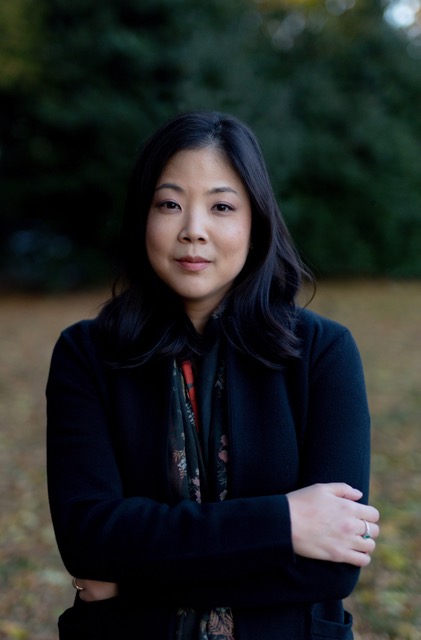 Nicole Chung's lauded 2018 debut, All You Can Ever Know, examined her identity as a transracial Korean adoptee and her reconnection with her birth family. Chung extends that same raw intimacy and empathic insight with which she illuminated bonds of blood to A Living Remedy (reviewed in this issue; Ecco Press, $29.99), in which she explores her relationship with her white adoptive parents, her homogenous Oregon upbringing, her relocation East and the devastating loss of both father and mother over too few years.
Nicole Chung's lauded 2018 debut, All You Can Ever Know, examined her identity as a transracial Korean adoptee and her reconnection with her birth family. Chung extends that same raw intimacy and empathic insight with which she illuminated bonds of blood to A Living Remedy (reviewed in this issue; Ecco Press, $29.99), in which she explores her relationship with her white adoptive parents, her homogenous Oregon upbringing, her relocation East and the devastating loss of both father and mother over too few years.
Writing A Living Remedy must have meant reliving some of the worst moments of loss. How did you prepare?
I honestly wasn't prepared because this isn't the book I thought I'd write. When I sold it, I knew it was going to be about family and leave-taking and loss, the ravages of grief and financial precarity and our broken safety nets. But at the time, my mother was in remission [from cancer], and I expected to focus on writing about my experience of losing my father, and to have my mom actively involved in helping me remember. She and my dad were both so supportive of my first book. But I'd only written about a third of the book when my mom's cancer came back. Then she started hospice care right as the entire country was entering pandemic lockdown.
How did you cope through the grief while writing about such loss?
I put the book down for months while I tried to care for my mom and do what I could from afar. She died in May 2020, and I probably didn't pick up the manuscript again until the fall or early winter. I realized that I was telling a very different story of loss and family now. I was traumatized and grieving and at several points didn't know if or when I'd manage to finish at all.
I think I only managed to write because grief, the pandemic, and many other changes in my life had forced me to understand that I was a human being, not a machine, that I needed to give myself some grace. I have always just sort of put my head down and powered through. But with this book, I was sometimes writing about the harmful effects of doing just that, the challenges of grieving under capitalism. I knew I wasn't alright and hadn't been since my dad's death. I couldn't just compartmentalize to get this book done. I had to work with my fragility, my brokenness, my humanity, and not just fight those things for the sake of "art."
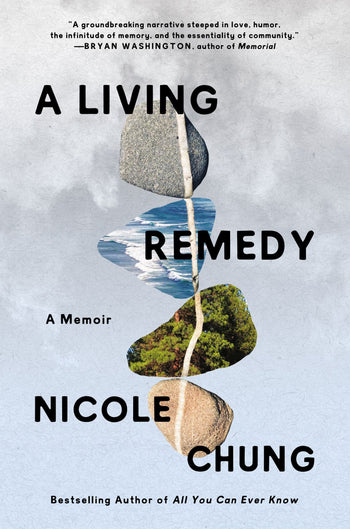 I told myself, every day, that if I couldn't write that day, it would be alright. And that if I couldn't write this book yet, that was alright. Eventually, I figured out how I needed to frame the story--it is really a story of my mother and me, now, and still, but with a different structure than I'd planned. I think writing every day helped me come back to my life and myself in the midst of the deepest grief I'd ever experienced. I don't think writing is therapy, and writing this book wasn't therapy for me. But I think it did help me find a lot of compassion for the person I am as my parents' daughter, as the child who lost them and has to figure out how to go on without them. I'm still recovering from their deaths and always will be. I'm actually very grateful to my writing practice, for keeping me company in those really long, hard months.
I told myself, every day, that if I couldn't write that day, it would be alright. And that if I couldn't write this book yet, that was alright. Eventually, I figured out how I needed to frame the story--it is really a story of my mother and me, now, and still, but with a different structure than I'd planned. I think writing every day helped me come back to my life and myself in the midst of the deepest grief I'd ever experienced. I don't think writing is therapy, and writing this book wasn't therapy for me. But I think it did help me find a lot of compassion for the person I am as my parents' daughter, as the child who lost them and has to figure out how to go on without them. I'm still recovering from their deaths and always will be. I'm actually very grateful to my writing practice, for keeping me company in those really long, hard months.
What do you think your parents might have said about this book? What's the most important thing you would have told your mother about it?
I don't feel I'm good at predicting how people in my life will respond to the things I write. I remember being so anxious about showing my first book to my parents--my adoptive parents and my birth father--and then everyone was so great about it, I realized I'd been worrying for no reason.
I would have told my mother--both my parents--that this book is everything I am, including my love for them and theirs for me. I hope they'd be able to see me in it, and see that I was trying to tell the truth and honor the life they made possible. I do wish I could share it with them. They weren't strangers to grief, and I think there's a lot they would have understood.
Your young daughters asked when they would be allowed to read your book, now books. What hopes might you have of their reactions?
My older daughter read All You Can Ever Know with me just before it was published--I wanted her first time through it to be with me so she could ask all the questions she wanted to or share how it made her feel. One thing I am always struck by whenever we talk about the past is her enormous sensitivity and empathy; for example, I remember her telling me once that thinking about me being alone in the hospital after I was born, in between families, as it were, made her feel sad. My instinct was to reassure her, tell her I didn't remember it, I'd been fine, etc. But I realized I would be doing that in part because I'd felt pressure all my life to reassure other people about adoption, and sometimes minimize its losses and its traumas. My daughter was so young when she first learned that I am adopted, and it made her feel something instinctive and true, and it wasn't my place to tell her not to feel that way. Talking with both my kids about my family, my grief, things I have been through, has helped me see these things through their eyes and also find more empathy for myself.
You've written two memoirs. "You're not famous... Do you think anyone is going to read it?" your mother commented about your first, and wow, what a resounding YES that was! You've co-edited two essay anthologies, A Map Is Only One Story with Mensah Demary and Body Language with Matt Ortile. Might you consider writing fiction someday?
I always think about what my mom said when I told her I was writing a memoir! It still makes me laugh.
I'd love to write fiction. Growing up, and in high school and college, I wrote a lot of fiction and the most terrible poetry. I only started writing creative nonfiction in my 20s, and then it was many years before All You Can Ever Know was published. I'd love to be able to write fiction for younger readers as well as adults. We'll see!
Since you're a full-time writer now, what might your devoted readers expect next?
Promoting and touring for A Living Remedy will keep me busy. I'm co-editing an anthology of young adult fiction, all stories by adoptees of color, which will be out from HarperTeen this fall. I've outlined a novel--who knows if I can write it! I hope I have time to figure some of this out after book tour. --Terry Hong, BookDragon
Book Candy
Book Candy
"Join in the Norwegian custom of Påskekrim or 'Easter Crime' with these new & classic Nordic noir titles." (via New York Public Library)
---
Author Liz Nugent chose her top 10 first lines in fiction for the Guardian.
---
Bumbass, for example. Merriam-Webster looked up "9 words that sound like insults but aren't."
---
In the Ancient Books of Wales, "Welsh literary history is preserved in the delicate pages of these medieval manuscripts," Atlas Obscura noted.
House of Cotton
by Monica Brashears
Monica Brashears's House of Cotton is an engrossing coming-of-age novel about ghosts, mothers and the struggle to survive. It is also a novel of the lingering challenges of race and class. Brashears's prose style is sharp and incisive, and the entrancing, distinctive voice of her protagonist is by turns weary, sardonic and yearning. A haunting story and unusual perspective make this a memorable and thought-provoking debut.
Magnolia Brown is 19 years old when her grandmother, Mama Brown, dies. Her absent mother struggles with substance abuse and an abusive partner, so that leaves Magnolia more or less alone in the world, fending off a lecherous landlord (who is also deacon at her grandmother's church) and struggling to get by. She works the night shift at a Knoxville, Tenn., gas station, where she tries to care for Cigarette Sammy, the muttering man who goes through the trash outside ("the only other Black person I see on this side of town"), between one-and-done encounters executed by her Tinder persona, Carolina Nettle. It's a tenuous living, and she misses Mama Brown terribly. One night "a whistling man with blood-smeared hands" walks into the gas station. "Hearing a man whistle when he walks in a place he don't own ain't natural. Like finding a chipped tooth on concrete. An omen." When he returns from the bathroom after cleaning his hands, she sees the man is polished, manicured, smooth-talking, wearing good cologne. Cotton offers Magnolia a modeling job, but she's wary; Magnolia knows omens. But she's also broke, and quite possibly pregnant.
At the address he gives her, Magnolia finds the Weeping Willow Parlor, a funeral home run by Cotton and his gleefully friendly, drunk Aunt Eden. The pair is eccentric: Cotton needs to constantly finger a piece of pocketed twine to remain calm; Eden is something of an alcoholic and firmly does not believe in ghosts. They are wealthy, and culturally foreign to Magnolia.
Cotton and Eden Productions offers Magnolia a most unusual modeling job: they provide families with lost or missing loved ones a final contact, a side business something like a séance. With Eden's uncanny funeral-home makeup skills and Magnolia's amateur acting, Magnolia will play the part of the dead. She's used to pretending, it has long been her coping mechanism: "When I get this way, when I feel like kudzu is wrapped tight around my ribcage and I'm bleeding a bright heat, I like to slip inside my head." She slides smoothly into Cotton and Eden's world and their comfortable, decadent habits: cocktails at all hours, joyriding in the hearse. She moves into the funeral home, lets Eden apply pale body paint to allow her to become missing white women and men, and begins saving her money. The ghost of Mama Brown checks in with Magnolia: knowing, comforting, but judging as well. Reading a letter Mama Brown left her, Magnolia knows "[S]he ain't left me. I ain't seen her, but she sits by me. Unseen but real as humidity." Soon the ghost will be seen as well.
Magnolia's life becomes split. At the Weeping Willow, she lives in ease and has money to spare, but feels estranged from the very different world Cotton and Eden come from. The relationship is transactional, and she's always acting, even when the makeup is off. And then there is Mama Brown's home, where the garden (the place Magnolia still meets her Tinder dates) grows out of control. By tending the needs of the rich white folks who help support her, Magnolia has literally let her own house get out of order. Her caretaking of Cigarette Sammy has become disrupted. Cotton's requests get weirder and weirder, and Mama Brown's ghost expresses concerns about Magnolia's choices, which have affected Mama Brown in the afterlife. The worldly and otherworldly pressures mount.
Set in the grand Weeping Willow Parlor, complete with secret passageways and haunted by Magnolia's much-loved but literally disintegrating grandmother, House of Cotton pits traditional gothic elements (the haunted castle, women in distress, death and decay) against contemporary questions about race and class and the persistent legacy of slavery. It shares the genre's sense of suspense and foreboding, but Magnolia's struggles are very realistic. Her first-person narration brings an immediacy to the events, and an intimacy that's advanced by her frank voice and turns of phrase. On its face, this is an intriguing ghost story with a compelling, beleaguered protagonist. In its layers, there is much more at stake.
"I am a tattered quilt of all the women before me. I am a broken puzzle," Magnolia states, but she is clearly a survivor as well. Despite her many fears, she is somehow fearless in pursuing the truest version of herself. Brashears excels in strong characters and deeply felt emotions, and in a robust sense of place: Knoxville shines as both urban and cultural setting and in the details of its natural world. Brashears offers a fresh new perspective on Appalachia and the American South, and Magnolia's rich voice will echo with readers long after the pages are closed. --Julia Kastner
Feel the Life in the Ghosts
An Interview With Monica Brashears
 |
|
| (photo: Beowulf Sheehan) | |
Monica Brashears is an Affrilachian writer from Tennessee and a graduate of Syracuse University's MFA program. Her work has appeared in Nashville Review, Split Lip magazine, Appalachian Review, the Masters Review and more. Her debut novel is House of Cotton (Flatiron Books, April 4, 2023), a novel about ghosts, mothers and the struggle to survive, set in Tennessee with its lingering challenges of race and class. Brashears lives in Syracuse, N.Y., where she is at work on her second novel.
What makes Magnolia a compelling protagonist?
The reason I love her so much, and why she's my baby, is because of her willingness to create other worlds as a response to trauma. There's such a tenderness there. It's an act of hope, that the world can be velvet. It doesn't have to be so harsh all the time. Even in moments when it's the harshest, she has an ability to make it velvet, and I think that's special.
To what do you attribute that ability in her?
That ability is both a method of survival and another sort of haunting. Magnolia's imagined fairytales stem from coping strategies she turned to as a child and because she's carried them into adulthood, her trauma still lives in that humor. Additionally, Mama Brown's laughter and steady shelter taught Magnolia her definition of safety and, because of that, Mama Brown's life is reflected in the way Magnolia jokes.
Was Magnolia the beginning of this novel coming to you?
House of Cotton began as a short story in undergrad, and it was plot driven. The characters were not-quite-formed-laughing-things. I had no intentions of returning to the story, but three years later, Magnolia returned. I only knew that she had an emotional cavity, and inside that cavity, she claimed there were geodes. Usually, for me, the plot comes first as a way to announce all the ways I'm fed up. But I don't have anything to work with until the characters show me how and why their yearning stretches beyond their exhaustion.
Does writing a ghost like Mama Brown differ from writing a living character?
I tend to write a lot of ghosts because I was raised hearing these Appalachian folktales. I think I feel the life more in the ghosts in the first draft, because there's an urgency there. They're back--why are they back? What do they need? I kind of prefer writing ghosts, strangely.
Is this an allegory about slavery?
Not entirely. I think it's very much rooted in the present. Although I do understand that reading, because the effects of slavery are in the present. It's in the fabric of everything that's happening now. And, of course, the title is House of Cotton, which kind of primes the reader.
How important is setting to this story? Could it happen anywhere else?
The basic plot could happen anywhere. But the setting, the love and the lust and the tenderness, is very much tied to the land--all the plants, the kudzu.
House Mountain is mentioned in the novel, and I move it around. It's generally always in my writing, but I move it around Tennessee. Knoxville is also, I would say, an Appalachian city, but it doesn't get viewed that way. The mountains are there. So I like to say hey, remember? Don't forget! We're in Appalachia.
What does it mean to be an Affrilachian writer?
I believe Frank X. Walker coined the term. I remember writing, and it was always about the mountains, in undergraduate workshops at the University of Tennessee. And then one day in a poetry workshop my senior year, just before I was getting ready to move to Syracuse for my MFA, I was called Affrilachian. And I was like, what do you mean? Can I claim that? I wasn't literally living on a mountain, but I was at the feet of them, so I was always on them growing up. So it really felt like coming home in my writing. When people think Appalachia, I don't think they often think about Black people inhabiting the mountains, so within the genre there's kind of a pushback against that erasure. This is our land, too.
Is there a special challenge to writing something this strongly based in place while you are elsewhere?
I did write the novel in Syracuse. I carry home within me, always, and nurture that sense through familiar music or food. If anything, Syracuse winters helped me focus on the specifics of all I missed; the book's infatuation with Tennessean summertime is yet another layer of yearning.
Has your MFA program changed how you work as a writer?
It definitely has. I love the community. When I first came here everyone was name-dropping all of these authors and I felt very out of place. But I took a class that was focused on Ulysses. We spent the entire semester reading Ulysses, and it was full of suffering, and it was bizarre, but I came out of that really uncomfortable semester having definitely improved in seeing all of these fun craft maneuvers available. Permission was gained. I've been exposed to so many texts and writers and traditions that otherwise I wouldn't have, and it's improved my craft and widened my love for literature.
What's an example of a good craft maneuver you learned?
Approaching revision with an acknowledgement that a writer's subconscious has the story figured out before the writer helped unlock the process for me. There's a pleasure in finding hints within a story or novel and toying with them until I find their meaning. My hints usually present themselves as repetition. There's an urgency that's accidental and charming and indicative of strong emotion. But what am I really trying to say?
What can you tell us about your next novel?
It is a trailer park noir filled with jewels, and the fear of God, of course, and murder.
What's your favorite thing about this novel?
I think Magnolia. I often think of her as my child. I was raised an older sibling, so I was kind of assigned motherhood occasionally, and she feels like a younger sibling or a child. Someone I hold close and within me and tend to love every day. --Julia Kastner
Rediscover
Rediscover: The White Hotel
 British author, poet and scholar of Russian literature D.M. Thomas, "whose greatest success came with his controversial 1981 novel The White Hotel," died March 26 at age 88, the Guardian reported. Inspired by his readings of Sigmund Freud and by Anatoly Kuznetsov's Holocaust novel Babi Yar, The White Hotel "combined these two influences in a driving, non-naturalistic plot centered on Lisa Erdman, a fictional patient of Freud, who progresses through sexual obsession to being shot down by Nazis in a ravine outside Kyiv."
British author, poet and scholar of Russian literature D.M. Thomas, "whose greatest success came with his controversial 1981 novel The White Hotel," died March 26 at age 88, the Guardian reported. Inspired by his readings of Sigmund Freud and by Anatoly Kuznetsov's Holocaust novel Babi Yar, The White Hotel "combined these two influences in a driving, non-naturalistic plot centered on Lisa Erdman, a fictional patient of Freud, who progresses through sexual obsession to being shot down by Nazis in a ravine outside Kyiv."
An international bestseller, The White Hotel lost the 1981 Booker Prize to Salman Rushdie's Midnight's Children. Thomas's other books include The Flute Player (1979), which won a Gollancz fantasy award; Ararat (1983); Eating Pavlova (1994); Flying in to Love (1992); and Memories and Hallucinations (1989). His biography Alexander Solzhenitsyn: A Century in His Life (1998) won the Orwell Prize.
A respected poet, Thomas published eight collections before turning to fiction. "Much influenced by the Cornish landscape, his poetry had a mystic, Celtic tinge," the Guardian noted. He continued to publish poetry--including a verse memoir, A Child of Love and War (2021)--and prose, and ran a group of Cornish writers called the Stray Dogs, after a famous early 20th-century Russian literary cafe in St. Petersburg.
"Always readable and often compelling, none of the later novels quite achieved the white-hot shock of The White Hotel," the Guardian wrote. "Bolstered financially by selling the film rights--though frustratingly for Thomas the movie was never made--he returned to his native Cornwall, settling in a large house in Truro. Long after it was written, a screenplay by Dennis Potter was broadcast on BBC Radio 4 in 2018."
Thomas "had huge vitality, a charismatic presence and considerable charm and humour. Into the often stifling and prissy world of English literature, he introduced a welcome raw honesty, an imaginative widening of limiting horizons, and a distinct whiff of sulphur," the Guardian said. The White Hotel is available in paperback from Penguin Books.


